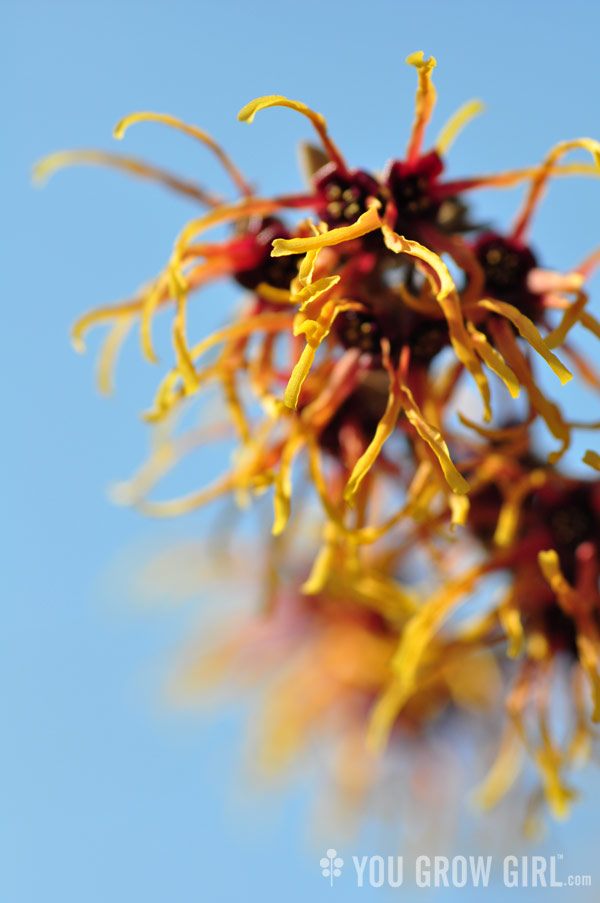
Until recently I was unaware that witch hazel is cold tolerant in my climate. Here’s the evidence: a large witch hazel tree in full bloom just this morning in my friend’s garden.
We’re experiencing a warm and sunny spell here in Toronto that is lifting our collective spirits. Suddenly things are in bloom as if it is spring. But it isn’t really quite spring and I keep reminding myself that while all signs point to it, we could have another blizzard ahead of us just yet.
March is a deceptively soft and cuddly lamb, for now.
More witch hazel:
Georgeous photo!
Gayla – I have never seen this before. It looks beautiful and maybe like a witch’s broom? Is it possible to get a side view or cutaway shot to get a better look at the overall flower/ plant? Perhaps you know the origin of the plant’s name if not from its appearance. I have seen this only as a bottle of extract next to the rubbing alcohol at the drugstore.
Great photo Gayla!
I love witch hazel, and what you have there is definitely a witch hazel (in bloom). It looks like it might be Chinese witch hazel (Hamamelis virginiana), which blooms in late winter (so, now), unlike our native witch hazel (H. virginiana), which typically blooms in the fall.
Chinese witch hazel also seems to have that characteristic redness at the base of the blooms, whereas our native witch hazel does not.
Lovely picture Gayla, thanks.
The witch hazel is in fact a cross between Hamamelis mollis and H. japonica, to be precise it’s Hamamelis x intermedia ‘Jelena’. It’s Asian parent gives it it’s late winter/ early spring blooming habit.
These Asian/ American crosses have produces plants with a wide variety of colours mostly reds, yellows and oranges. They are rock hardy and bloom reliably every year, sometimes earlier than this.
Why wouldn’t everyone in this climate not want to grow this plant?
Thanks for the link and additional info.
Lovely photos. Is this the witch-hazel used to make the lotion?
Salvation Jane: Not the exact plant, but similar.
Looks really beautifully wiry. I like that the shot has some faded effects; it highlights the dimensions of the hazel.